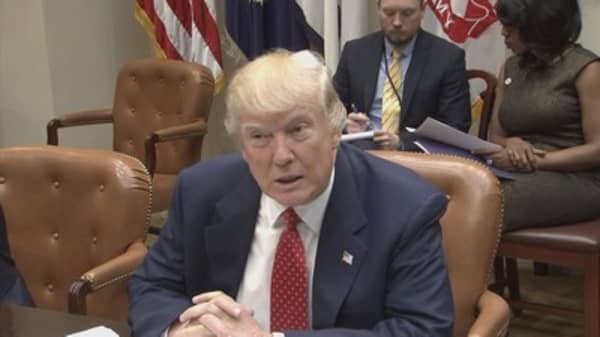In a recent article on The Brookings Institution website, former Fed governor Ben Bernanke acknowledged that in general tax cuts have a much smaller impact on economic demand than government spending. The NBER (National Bureau of Economic Research) estimates that of every dollar of corporate tax cuts, only an additional 50 cents reappear in economic circulation – meaning that it has a very limited positive effect, despite all the false rhetoric being thrown around that tax cuts are significantly stimulatory.
In isolation, they may appear to be positive but in aggregate when the secondary effects of corporate tax cuts are considered, these will invariably disappoint, as more and more commentators have started to realize.
Moreover, this is not a typical time and therefore the headwinds for the assumed Trump tax cuts impacts should be expected to be far stronger than that.
Furthermore, whatever proprietary dynamic models the Trump economic team conjure to support fictional future growth forecasts, the $6-7 trillion of proposed tax cuts will ultimately be funded largely by reduced spending. This will become more evident in the discussions surrounding the debt ceiling increase next month.
At the precise time when increased government spending is required to reflate America, the redirection of this funding into tax cuts is almost certainly adverse. Maybe this explains why Trump tax reform's timeline has now been extended until the August recess.
My empirically-based model of the new administration's tax, infrastructure and government spending policies (especially the tax policies) forecasts that they'd combine to make a bad situation far worse, derailing the U.S. economy and if enacted now, "Trumponomics" could create a primary drag of up to 2 percent on U.S. GDP (gross domestic product) - excluding such secondary effects as higher interest rates, stronger USD FX rates and viciously spiraling deflation.
This would almost certainly tip America into a recession that would most likely become known as America's second Great Depression, having once again blundered in the control of a delicate machine, the complexities of which policy-makers still don't understand.
—Paul Gambles is a managing partner at MBMG Group.
For more insight from CNBC contributors, follow
@CNBCopinion
on Twitter.




